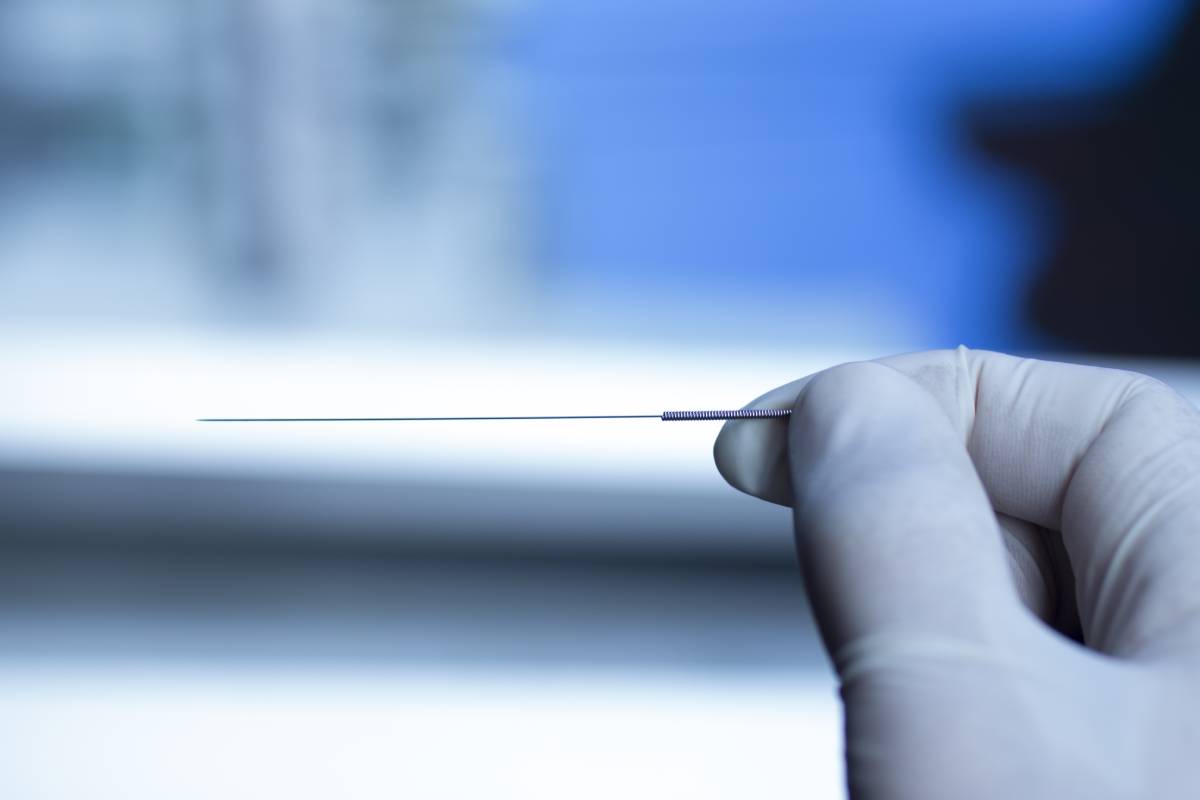Dry needling is a promising therapeutic technique that has continued to gain popularity in the past few years. Now, there is new evidence to suggest that dry needling may be effective in alleviating specific types of headaches.1
Often practiced by pain specialists and physical therapists, dry needling involves the insertion of several hypoallergenic filiform needles into spots known as “trigger points” for acute relief of tension or pain. Unlike acupuncture, which uses traditional Chinese meridian lines to determine needle placement, dry needling targets over-contracted muscles.2 Its mechanism of action is best explained by Liz Chumanov, DPT, PhD, a dry needling expert at the UW Health Sports Rehabilitation Clinic:
“What the needle is doing is allowing you to get directly at that spot — it’s going to disrupt that taut band and cause it to relax. It’s going to cause a little bit of tissue damage, which is actually a good thing because it will cause more blood to flow to the area, and blood flow is very healing. It can also have a quieting effect on the nerves.”3
While dry needling can be used to treat a number of different ailments throughout the body, a recently published systematic review and meta-analysis has shown that it has significant potential in the treatment of headaches.1 Authors Pourahmadi et al. sought to evaluate the efficacy of dry needling in alleviating tension-type headache (TTH), cervicogenic headache (CGH), or migraine. The effectiveness of the therapy was evaluated by measuring the patient’s reported pain and relative disability as dependent variables.
The standards for inclusion in the systematic review were highly rigorous: only 0.4 percent of existing studies on dry needling were included in the meta-analysis performed by Pourahmadi et al. In total, the study incorporated data from eleven randomized clinical trials. Trials were selected from a wide variety of databases, then reviewed by three different individuals who independently evaluated potential biases as well as confidence intervals.
The authors reported several promising findings. Firstly, dry needling was extremely effective at treating tension-type headache. In fact, according to their findings, around 50 percent of individuals with tension-type headache treated with dry needling experienced a significant decrease in pain intensity and headache-related disability.1 Similarly, for approximately 30 percent of patients with cervicogenic headache, the therapy significantly decreased both pain and disability.1 These findings would suggest that dry needling is a highly efficacious treatment for both tension-type and cervicogenic headaches for some individuals. The effectiveness of dry needling as a treatment for migraine was less supported when compared to the other two conditions.
While the authors point out the need for more thorough investigation into this topic, their findings highlight dry needling as a potentially key therapy in the treatment of tension-type and cervicogenic headache. Moreover, individuals who have contraindications to more traditional treatments for these conditions may especially benefit from dry needling. As we continue to understand more about this therapy and improve on existing methods, research may find that patients with similar tension-related musculoskeletal conditions will also benefit from dry needling.
References
[1] Pourahmadi, M., Dommerholt, J., Fernández-de-Las-Peñas, C., Koes, B. W., Mohseni-Bandpei, M. A., Mansournia, M. A., Delavari, S., Keshtkar, A., & Bahramian, M. (2021). Dry Needling for the Treatment of Tension-Type, Cervicogenic, or Migraine Headaches: A Systematic Review and Meta-Analysis. Physical Therapy, 101(5), pzab068. doi:10.1093/ptj/pzab068
2 Dunning, J., Butts, R., Mourad, F., Young, I., Flannagan, S., & Perreault, T. (2014). Dry needling: a literature review with implications for clinical practice guidelines. Physical Therapy Reviews, 19(4), 252–265. doi:10.1179/108331913X13844245102034
3 UW Health. (2017, August 28). Trigger point dry needling: On-point pain relief. UW Health Sports News. https://www.uwhealth.org/news/trigger-point-dry-needling-on-point-pain-relief.
